By Kelsi Gambill, MSPR, Communications and Marketing Manager

4-H paves a foundation of success from youth into adulthood. 4-H teaches life skills, provides opportunities to explore projects, learn about the world, meet new people, network, make lifelong friends and memories, travel, and so much more. These skills include but are not limited to self-esteem, making friends, responsibility, communication, citizenship, leadership, record keeping, time management, confidence, independence, resilience, commitment and compassion—all learned through stages and development via experiences instead of instruction.
The 4-H pledge summarizes the mission of the organization:
I pledge my head to clearer thinking,
my heart to greater loyalty,
my hands to larger service,
my health to better living,
for my club, my community, my country and my world.
Beyond life skills, there are many fond memories made through participating in 4-H, often alongside family. Often parents serve as 4-H leaders while their kids are in 4-H. The value of 4-H is so great that oftentimes youth grow up and as they start having families of their own, enroll their own kids in the program. It is common to see multi-generational families involved in 4-H. But if one didn’t come from such a family, doesn’t mean that one can’t participate in the organization as it is open to anyone ages 5-7 years as a cloverbud, 8-13 as a junior member, and 14-19 as a senior member (as of October 1). There are 4-H clubs in every county in Montana, every state in the US, and every US military base worldwide.
From camps to leadership training to 4-H Congress and even National 4-H Congress, there is truly a project and pathway for everyone. The projects that one can take in 4-H are numerous and often subject matter based from livestock to woodworking, horticulture to cooking and baking, sewing to robotics, shooting sports and much more! In fact there are currently over 200 different projects available to engage in through learning any having fun through hands-on activities in science, health, agriculture and civic engagement.
Each summer the hard work put into one’s projects is showcased at the county fair. This is the time that 4-H members bring their projects to be judged and evaluated, accompanied by interviews for indoor projects. It is a time of excitement, pride, and maybe some nerves. The countless hours of training, feeding, grooming and preparing one’s livestock pays off when one gets to the fair with their lambs, pigs, steers, horses and breeding projects.
At show time, a judge evaluates each animal for how market ready they are in the market classes and then how well each individual shows their animal in the showmanship classes. The winners of market and showmanship classes are awarded as the Grand Champion, the highest honor for one’s project. Being chosen as the Grand or Reserve Champion in one’s project denotes the best in class or being the best of the best and awarded with a purple ribbon for grand champion and pink for reserve, often along with a belt buckle as grand champion.
Exhibiting projects at the fair teaches life lessons like healthy competition, evaluating finished livestock, showmanship, being a role model for younger members, helping others out, learning how to be a humble winner and gracious when one’s placing isn’t what was expected (such as receiving a second place red ribbon instead of a first place blue ). The ribbons and awards earned through exhibiting one’s projects at the fair is a testament to a job well done. And when it comes to livestock projects, you learn that it’s one judges opinion on one day (this is helpful to remember when placings didn’t go as you thought).
Personally, I can’t think of a single organization that shaped me more in my 11 years of involvement than 4-H. I can truly say that 4-H is one of the most influential organizations that I was involved in growing up. My time in 4-H is filled with many memories. Friends made in 4-H are still with me today. Memories of trips throughout my 4-H years are vivid from Camp Needmore in Ekalaka, to competing at State 4-H Congress, field trips for projects, competing in jackpot shows-and even attending National 4-H Congress. There are also fond memories of raising livestock with my family—spending hours every day with my sisters and brother and our lambs, pigs, and steers. My mom grew up in 4-H and I distinctly remember her saying to our family that 4-H was the only thing she knew of that we could all participate in and that it would teach us responsibility.
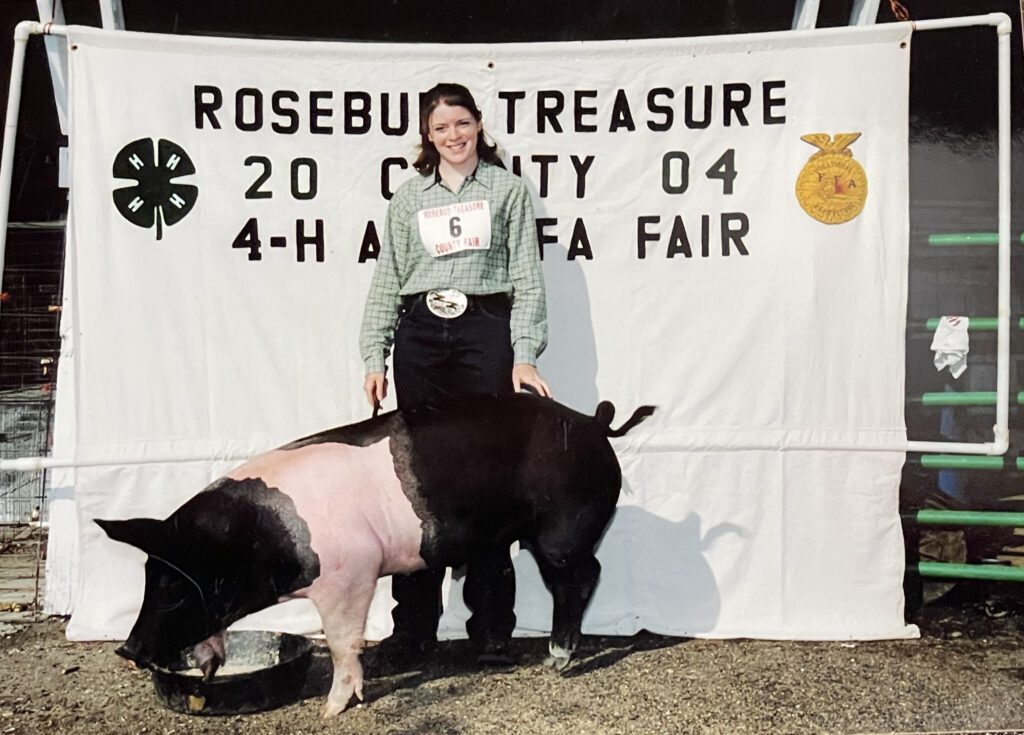
Often this hard work paid off at the fair, combined with selecting good quality animals and feeding them well, we had blue ribbon livestock projects and from 2002-2007 had at least one grand or reserve champion livestock project and at least one or two of us in the round Robin competition. The best was when all of us girls were competing in Round Robin, though it may have been confusing for the judges (and did make for a stressful show morning)! One could say that we had a Gambill dynasty at the Rosebud-Treasure County Fair of raising high quality, finished livestock and exhibiting them well—we were fierce competitors in the show ring and took our 4-H projects seriously, treating them like they were our job leading up to the fair and through it.
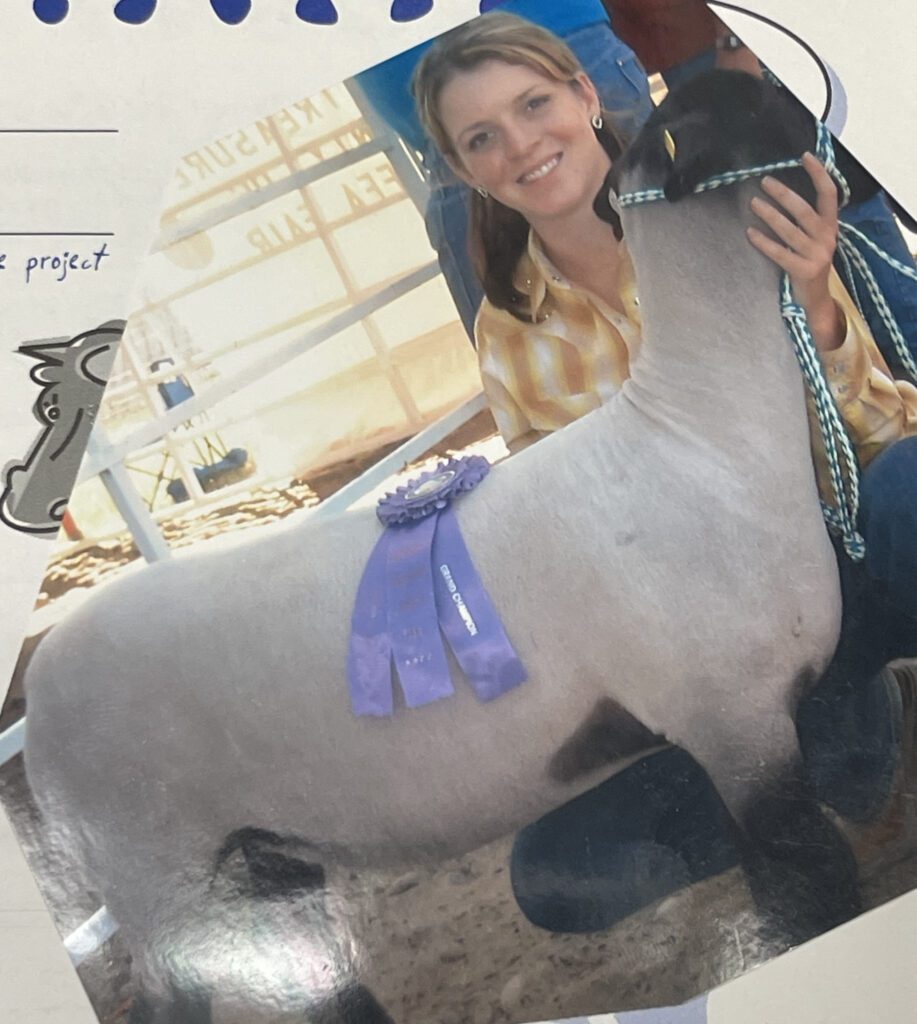
My time in 4-H culminated in a record year as I exhibited the Grand Champion Market Lamb, Grand Champion Market Hog, won the Senior Round Robin for showmanship, and was presented with the 4-H Achievement Award; a total of five belt buckles in one fair in 2006. It also included winning the state fashion revue and a state beef project award. These awards were a symbol of a job well done and a testament to the work put into the projects and preparations for the fair.
I’m grateful for my time in 4-H and the large role it played in shaping me as a person. In fact, my 4-H participation and good leaders in the county extension agents overseeing the program are what led me to pursue degrees in agriculture in college, with the intent of continuing to impact the next generation of 4-Hers and agriculturalists.
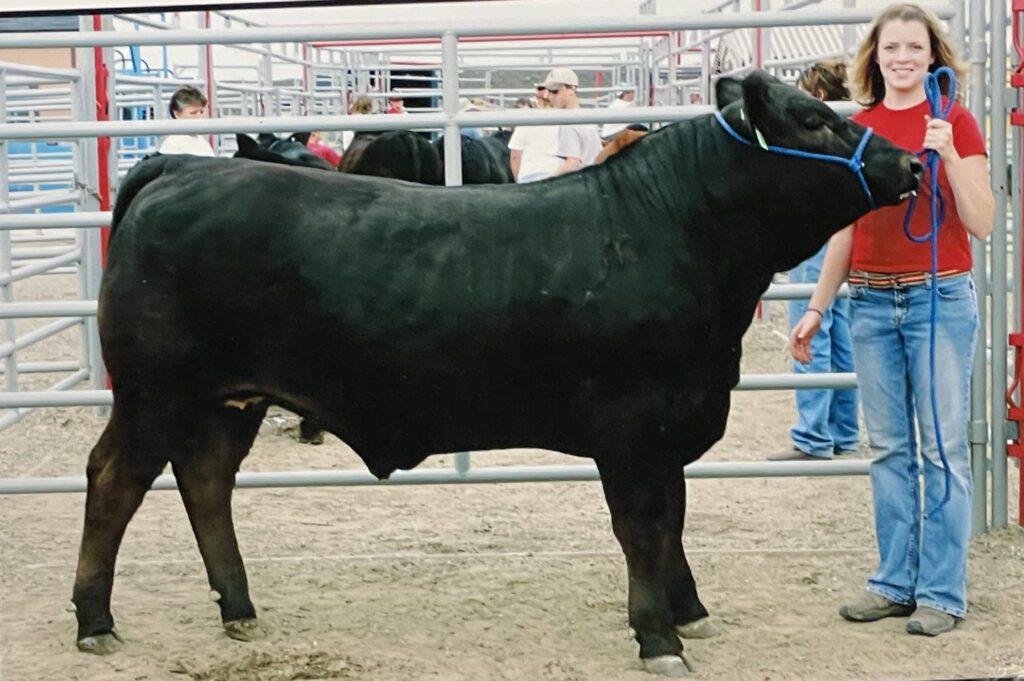
Here at the Billings Chamber of Commerce, we have five 4-H alumni: Aly Eggart, Jack Jennaway, Hannah Olson, Megan Stevenson, and myself.
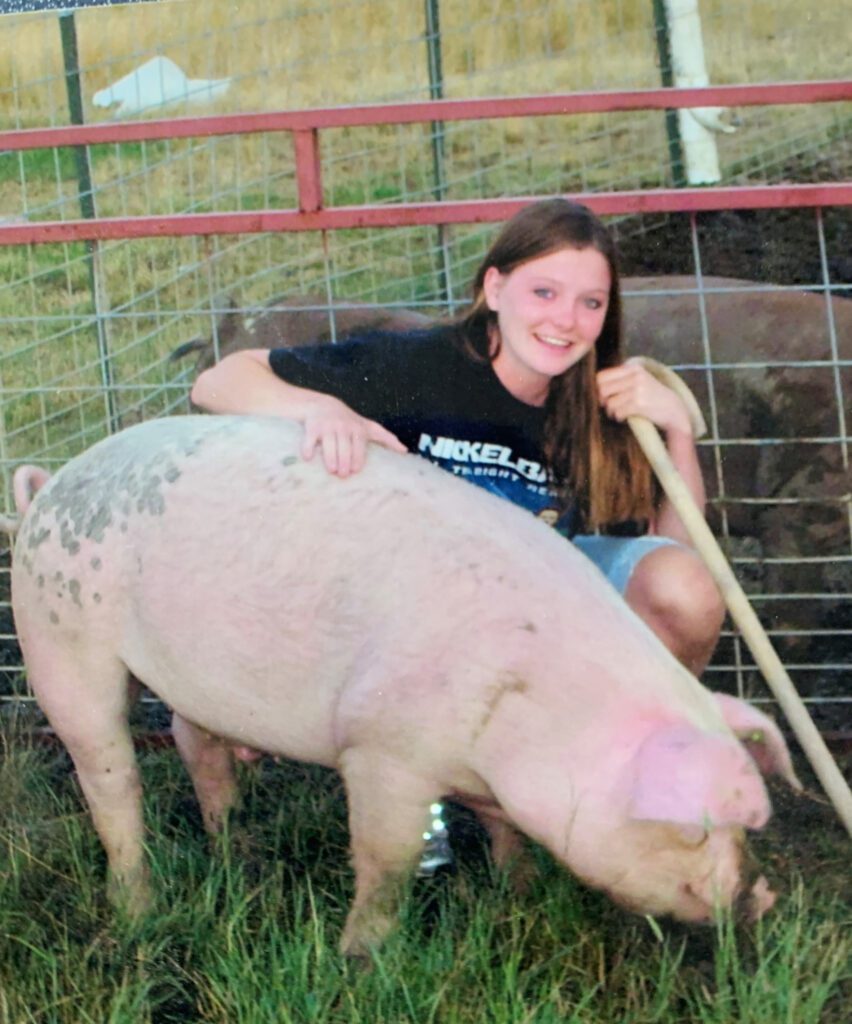
Montana 4-H
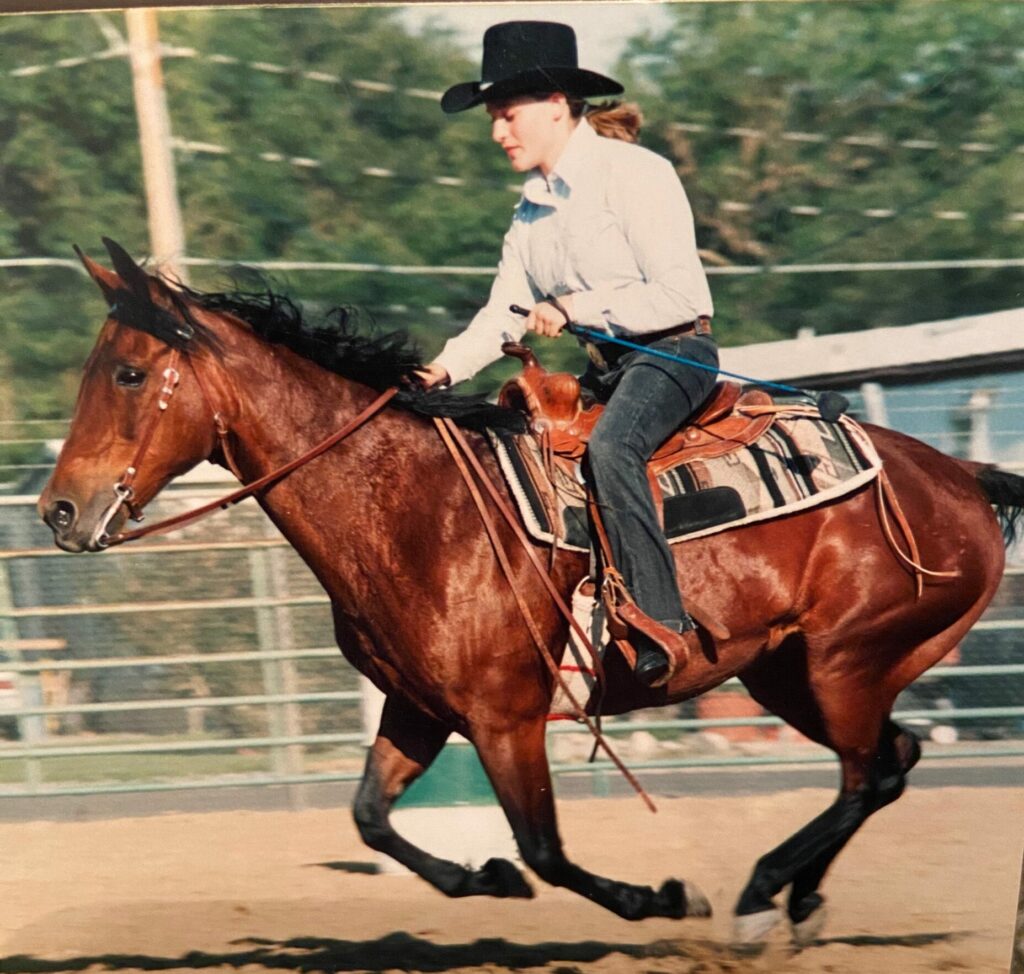
Wyoming 4-H
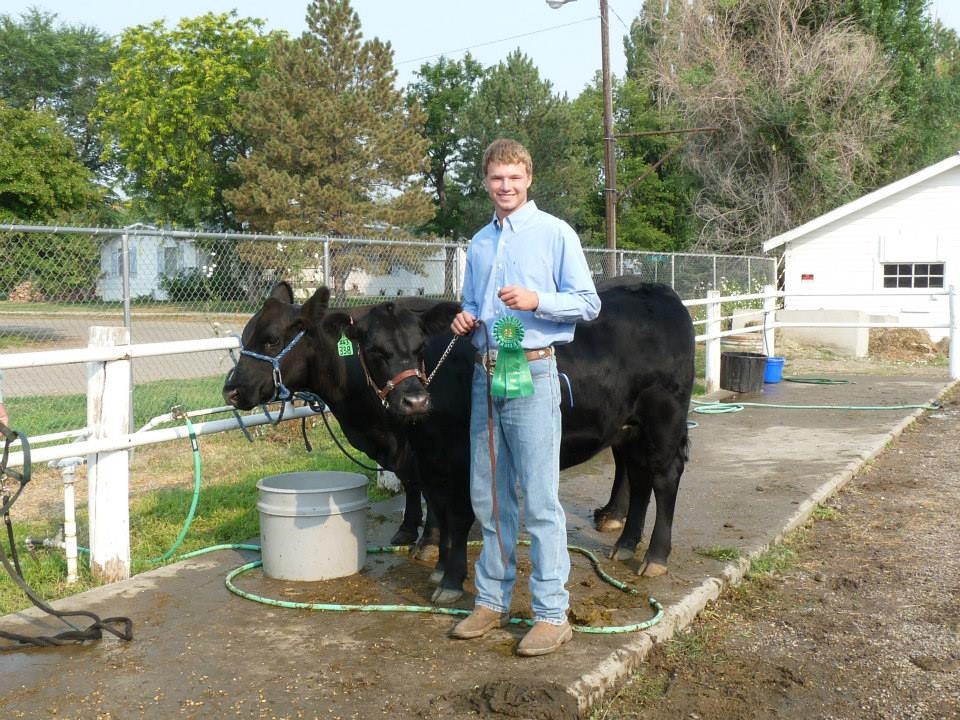
Montana 4-H
Learn more about 4-H in Montana at www.montana.edu/extension/4h/.
